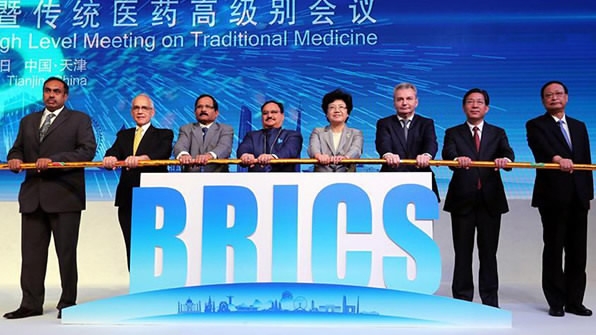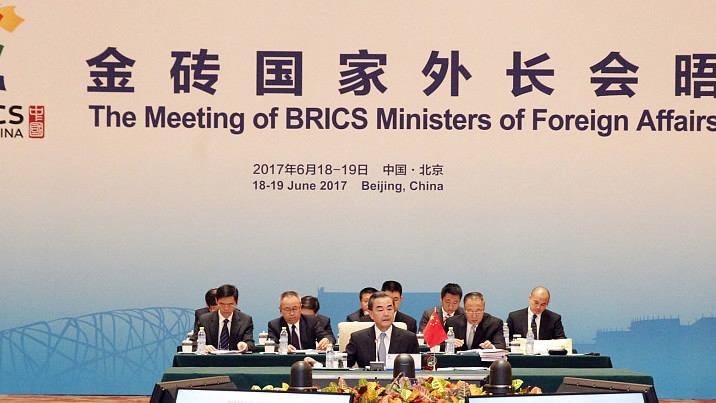By CGTN’s Zhu Feng
The BRICS countries -- Brazil, Russia, India, China and South Africa -- are a rising group of newly industrialized nations which hold a growing influence in shaping the global economic landscape.
In 2016, the BRICS’ weight in the global economy rose to 23 percent, from 12 percent 10 years ago.

Guests attend BRICS Health Ministers Meeting and High Level Meeting on Traditional Medicine in Tianjin on July 6, 2017. /Xinhua Photo
China's economic growth forecast for 2017 stayed at 6.7 percent and India's at 7.2 percent, according to the International Monetary Fund's recent report, both much higher than the world's predicted 3.5 percent growth.
Experts say recession-hit Russia and Brazil will also see positive growth rates this year, while South Africa is expected to expand at a moderate rate.
The BRICS group is also a growing force in global trade, accounting for 16 percent in 2016 from 11 percent in 2007. And overseas investment originating from BRICS countries increased to 12 percent in global total in 2016 from seven percent in 2007.

Chinese Foreign Minister Wang Yi (C) speaks at a press conference during the meeting of BRICS Ministers of Foreign Affairs in Beijing in June. /VCG Photo
At the BRICS Ministers of Foreign Affairs press conference last month, Chinese Foreign Minister Wang Yi said that BRICS cooperation should act as a "booster" for unity and cooperation between emerging market countries and developing countries.
Zhao Zhongxiu, vice-president of University of International Business and Economics, has said China should be the “core” of BRICS, helping all members to upgrade industries, and form a unitary industrial system in the future.
China's cooperation within BRICS countries has been rising in recent years, expanding into a wide range of areas including manufacturing, energy, tourism and finance.
And more and more Chinese firms have chosen to invest directly in BRICS countries to shorten the distance with their customers and save on tariffs.









